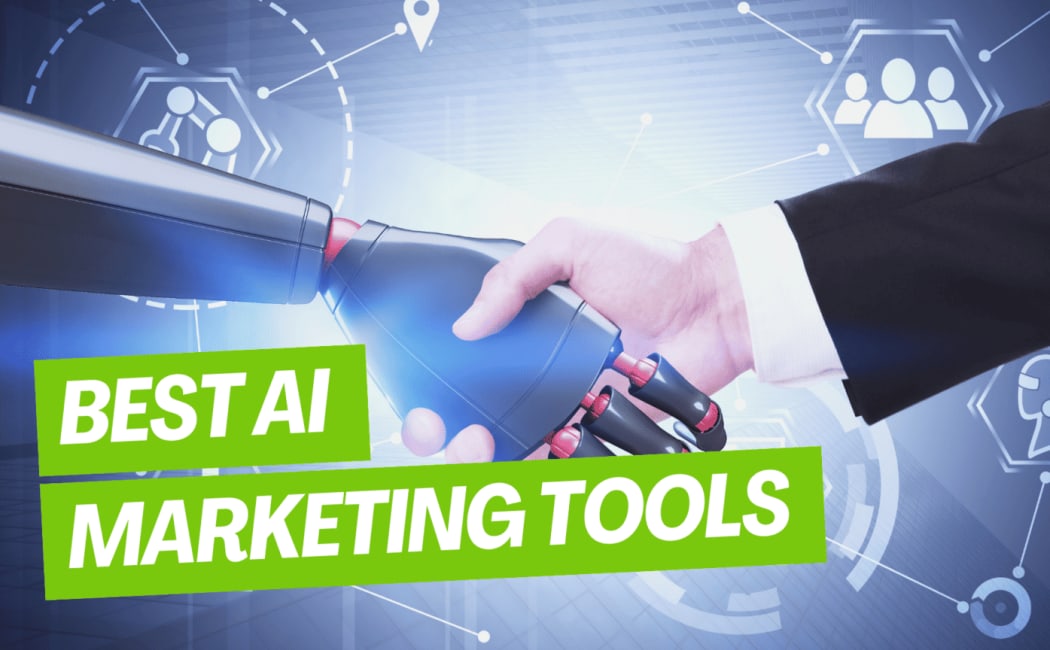How to Choose the Right AI Tool for Marketing & Customer Service

How to Choose the Right AI Tool for Marketing & Customer Service
Introduction
In today’s fast-moving business world, using AI in marketing and customer service is no longer optional—it’s a competitive necessity. But choosing the **right** AI tool can be confusing. Between dashboards, chatbots, predictive analytics, and automation, you want a solution that fits your team, budget, and goals. This article walks through what to compare, what to test, and how to decide so you get the most value. Keywords like *AI customer service*, *marketing automation*, *chatbots*, *predictive analytics*, and *AI tool comparison* are essential in your search & content strategy.
Key Criteria to Evaluate the AI Tool
- Define clear goals: Are you wanting better lead generation, personalized marketing content, faster responses in support, or reducing resolution time? Knowing exactly what problem you’re solving helps you select features that matter.
- Features & capabilities: Check for natural language processing (NLP), sentiment analysis, predictive analytics, automation workflows, multilingual support, and customizable response templates. Tools that learn & improve over time (machine learning) often deliver better results.
- Integration with existing systems: The AI should connect seamlessly with your CRM, ticketing systems, marketing tools, data analytics, and other platforms. A tool that isolates itself can create inefficiencies.
- Scalability & flexibility: As your business grows or your needs change, can the tool scale? Can you add more channels (chat, social, email), more users, more languages without huge cost?
- User experience & accessibility: A clean interface, mobile readiness, responsive chats, ability to customize tone of voice & branding—these matter a lot for customer satisfaction. Also consider accessibility features (multilingual, screen-reader friendly).
- Vendor support & training: Strong onboarding, documentation, customer support, training tools—these often make or break the investment. If you don’t have internal AI expertise, this is even more critical.
- Cost and ROI: Look beyond subscription price: factor in costs of setup, data migration, maintenance, training, and possible upgrades. Also assess potential returns: saved agent hours, improved retention, higher conversion rates.
- Data security, privacy & compliance: Especially for customer service, you’ll be capturing sensitive data. Ensure the AI tool complies with GDPR, CCPA, or relevant local data protection laws; has good encryption, access controls, clear policies.
- Trial period & testing: Before fully committing, pilot the tool in a controlled environment. Use sample workflows, real user interactions, and collect feedback. Testing helps expose limitations you may not see on paper.
Common Use-Cases: Marketing vs Customer Service
Different teams often expect different outcomes from AI tools. Here are frequent use-cases and what to look for in each:
- Marketing Automation & Personalization: Tools that can segment audiences, deliver personalized messages, generate content, optimize ads. AI-powered content creation, A/B testing, predictive lead scoring are valuable here. Keywords to watch: *personalized marketing offers*, *AI marketing content*, *predictive lead scoring.*
- Chatbots & Virtual Assistants: For customer service, chatbots can handle first-line queries, FAQs, order status etc. Ensure they can escalate complex issues to humans properly and maintain context. Also look for conversational AI, tone customization, multilingual capability.
- Sentiment & Voice Analysis: Recognizing unhappy customers early (via sentiment, voice tone) so service agents can intervene. Also helps adjust marketing messaging based on customer mood.
- Predictive Analytics & Insights: Using historical data to forecast churn, customer lifetime value, campaign performance etc. For example predicting customer behavior before they complain or leave.
- Self-Service & Knowledge Bases: AI tools that help build or assist with self-help portals, automated responses, dynamic FAQ, help center. This reduces load on live agents and speeds up response time.
- Omnichannel Support: Support across chat, social, email, phone—using a unified AI tool that tracks context across these channels. Useful for both marketing touchpoints and customer service touchpoints.
Steps to Select the Best AI Tool for Your Organization
Once you have criteria and use-cases down, follow these steps to make the right selection:
- Map requirements & priorities: Gather your stakeholders (marketing, customer service, IT) to list must-haves vs nice-to-haves. Prioritize features that align with your current pain points.
- Research and shortlist: Compare several tools—read reviews, case studies, and see vendor transparency. Evaluate tools that are well-known in your industry and have positive user feedback.
- Pilot the tool: Use it on a small scale—one campaign, one support channel—collect metrics like response time, resolution rate, user satisfaction, agent feedback. Adjust settings or workflows during pilot.
- Train your team: AI tools are only as good as the people using them. Ensure customer service agents and marketing staff understand how to get best results, how to review AI suggestions, adjust prompting etc.
- Measure ROI and metrics: Define KPIs early—e.g. reduced response time, increased conversions, improved CSAT (customer satisfaction), lower churn. Monitor regularly.
- Ensure ongoing improvement: AI tools need updates—for data, models, integration, user feedback. Set up processes for continual optimization.
- Maintain balance between automation & human touch: Always allow customers to reach a human when needed. Automation should assist, not replace empathy.
Examples of Leading Tools & Use-Cases
To make your decision easier, here are examples of tools and how they are being used effectively:
- Sprout Social: Uses AI to automate case management, monitor social conversations, detect case surges, categorize sentiment and route tasks. Ideal for marketing teams wanting social listening and customer service alignment.
- Sobot: Known for its customization and personalization features; used widely in customer support to adjust tone, route tickets smartly, etc.
- CloudTalk: Offers workflow automation, AI-powered coaching for agents, voice analytics and helps streamline operations. Great for high interaction customer service teams.
- HubSpot AI tools: Provide marketing content generation, customer data integration, predictive analytics to spot churn risks and personalize engagement.
Conclusion
Picking the right AI tool for marketing or customer service isn’t just about flashy features—it’s about aligning tool capabilities with your real business challenges, ensuring good integration, protecting customer data, and keeping human empathy in the loop. When done right, *customer service AI*, *marketing automation*, and *chatbots* can drive efficiency, increase customer satisfaction, and boost ROI.
Take time to test, gather feedback, and measure results. As AI evolves, so should your strategies and tools. The best investments are those that adapt with your growth, respect your brand voice, and deliver measurable value—not just novelty.
